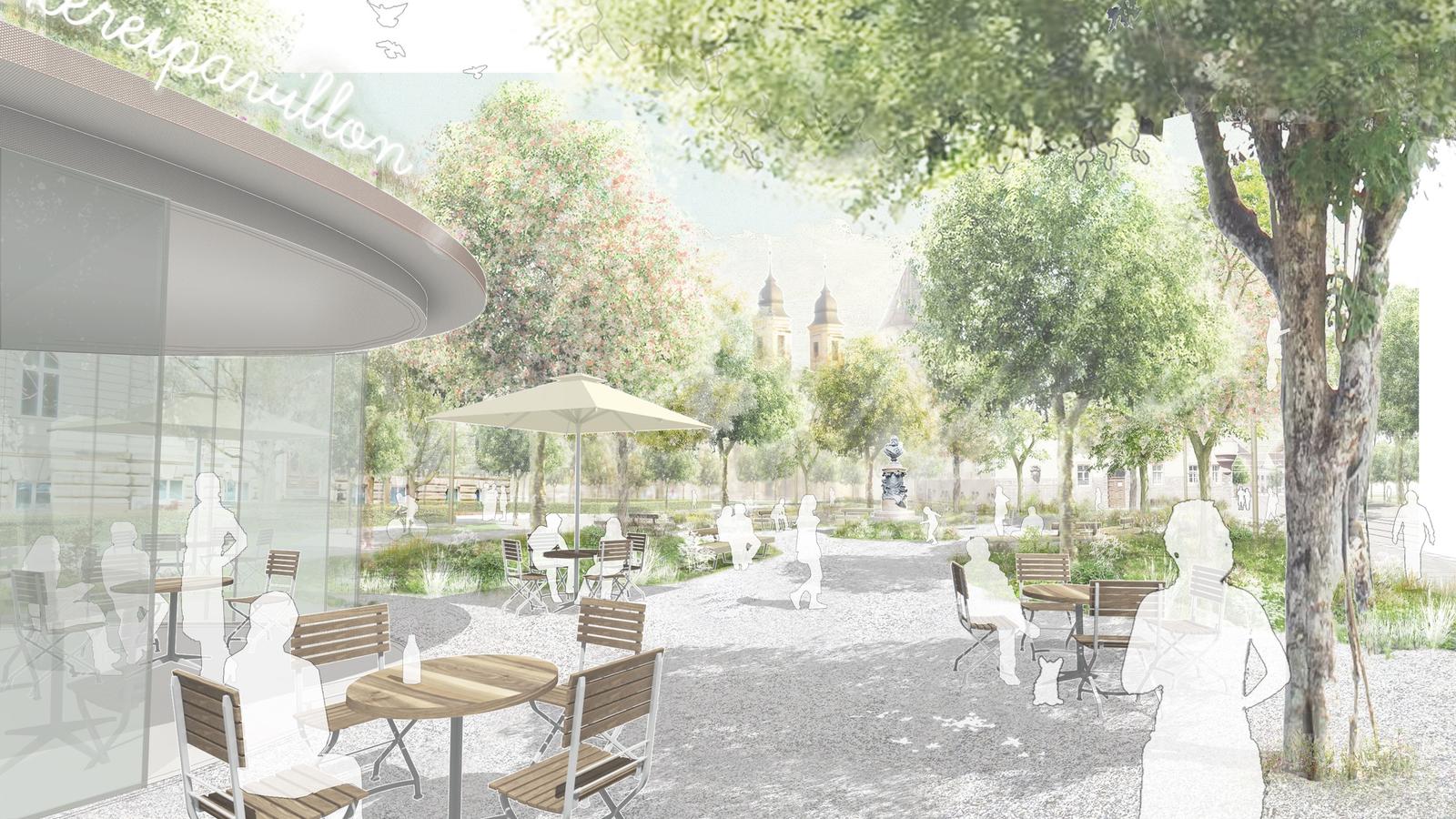The design of the tram line and the associated urban spaces was based on the idea of preserving the different characters of the city and combining them with modern traits in order to give new impulses to the northeastern city. The light urban floor extends the spaces for pedestrians and at the same time integrates the tram as a rolling sidewalk. The tram is no longer seen as a foreign body, but as part of the cityscape. Different floor coverings are used in a targeted manner to distinguish the individual subspaces from one another and to reinforce their own character. At the same time, the various floors harmonize with each other in such a way that a uniform image is created throughout the entire planning zone. The shopping streets are connected with a uniform pavement of light granite stone, whereby the historic shell limestone and dolomite are reserved for the Residenzplatz, the Balthasar-Neumann-Promenade and the KJS-Platz in front of the Michaelskirche. The various squares are designed as important recreational zones to invite people to linger and meet friends, while providing space for events and activities. For this purpose, the Barbossaplatz will be equipped with open-air gastronomy under trees and a fountain in the center. In addition, a direct line of sight to the historically significant church of St. Michel will be maintained. The medieval ambience at the Bürgerspital will be transformed into a decelerating place of rest with shady seating covered by trees. The Theaterplatz, on the other hand, will become an open-air theater under trees oriented to nature and will provide a stage for outdoor theater performances and living together in the city. In addition, the spacious Residenzplatz can be used for large-scale events, giving them a special atmosphere thanks to the unique backdrop of the baroque residence. As places of retreat, the Josef-Stangl-Platz and Geschwister-Scholl-Platz each will be designed in their own way. Whereas one focuses more on a historical character, the other is designed to reflect the green character of the city. With a ring park and a tree-covered area, a green retreat is created here in the middle of the city. Throughout the concept, the tree species Tilia tomentosa 'Brabant' is used as the lead tree species. This tree is a compatible climate tree and acts in many places as a connecting historical element between the new tram line and the city center. The shopping streets are also planted with plants, giving a friendly and inviting look. Plants are chosen that will create a special atmosphere throughout the whole year with their picturesque growth, blossoms and autumn colors. They will be underplanted with Carex foliosissima 'Icedane' introducing modern features. Preexisting trees are supplemented with new climatic trees, which serve as insect nutrient shrubs and habitats. Additional beds with combinations of grasses and bright insect nutrient perennials give the city a prestigious, cheerful and modern look. Therefore, architectural structure is complemented by colorful eye-catchers. The generous plantings continue the green character of the city and have a positive and sustainable impact on the climate and the local flora and fauna. The sustainability of the concept is also reflected in the planned rainwater management system. A system of infiltration trenches is designed to drain off rainwater via inlets even in heavily sealed urban areas and to absorb it in coarse-grained layers. This will achieve several effects. On the one hand, the risk of flooding is significantly reduced during heavy rainfall, or the stored water can be used as an irrigation system for trees. The principle of storage, infiltration and evaporation of the water creates an evaporation effect that contributes to the cooling of the environment.




